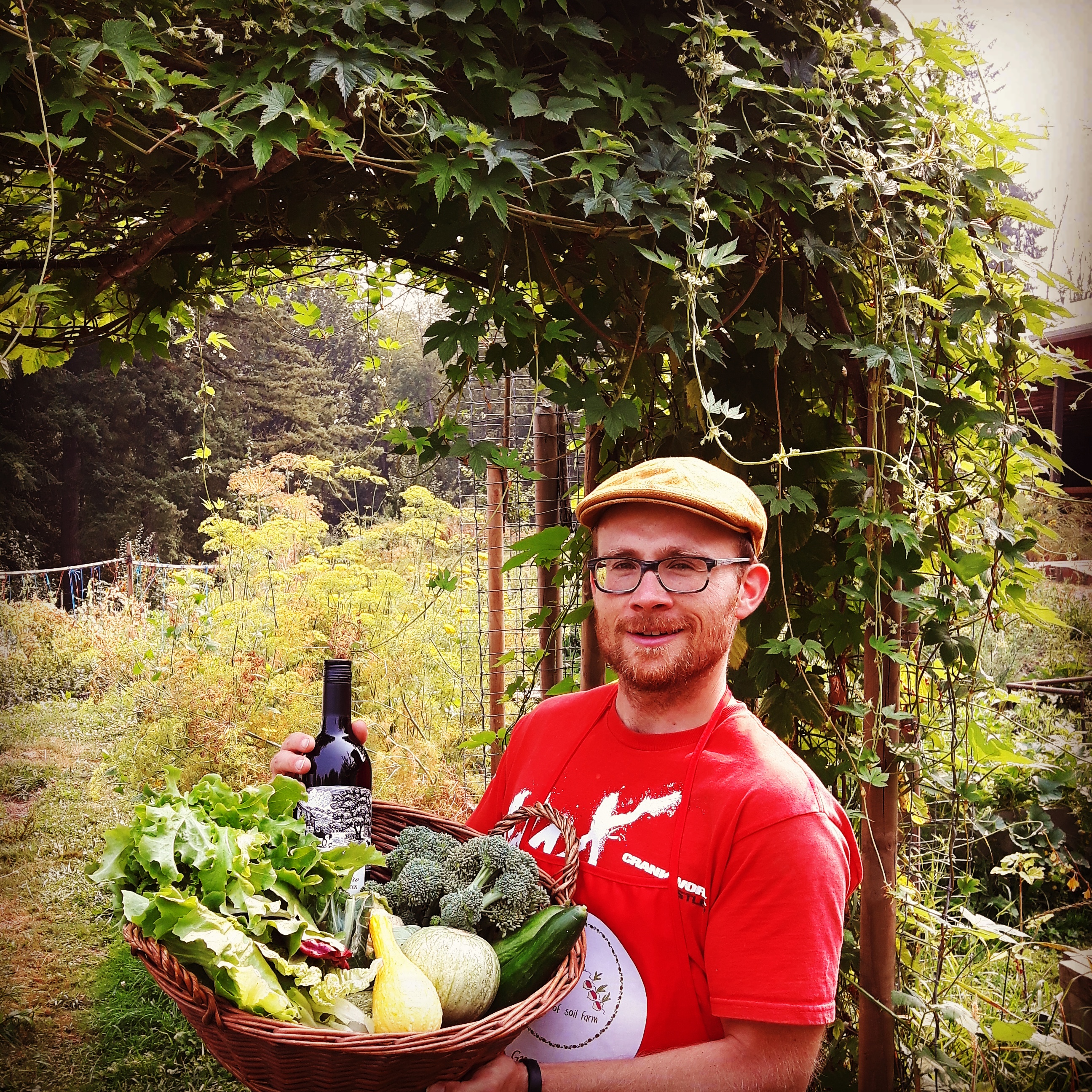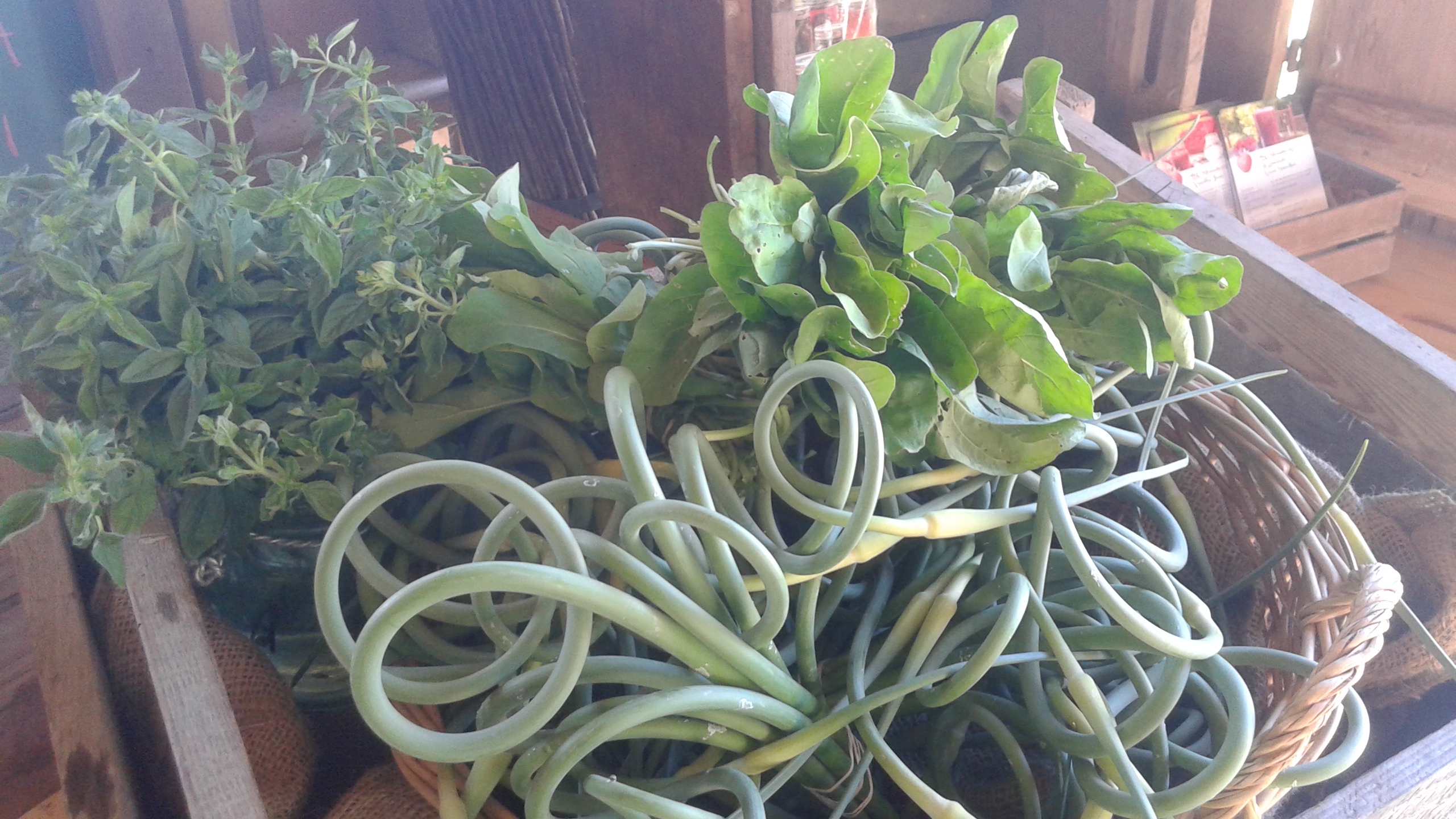
Ever since we started farming, we were fortunate enough to be able to engage with a lot of our customers here at the farm stand. Naturally, we mostly talked about food. With that came unsurprisingly discussions about health benefits of fresh produce and also the cost of healthy eating.
Looking back at the many conversations we had, I am still amazed at how many different cooking ideas our customers had. Ever tried water melon, onion and fennel in one salad? Roasted red cabbage anyone? Eggless eggplant ricotta? While everyone had their own special dish, all agreed on the better taste and nutrient density of fresh farm produce.
I feel though, that taking a customer’s perspective can be revealing and offers me a chance to see our farming business from the outside. So I decided to venture out a bit more this winter to get a few more opinions on this subject, asking: Is healthy eating really more expensive?
Save on calories, spend on nutrients
I first did a random online search and found this blog from 2012 asking the same question. To my surprise, the writer first looked at a calorie to nutrient ratio. “You can go to a fast food restaurant and get 400-700 calories for a dollar. When you spend a dollar in the grocery store, you only get 100-200 calories for the same dollar. Obviously, your dollar goes farther at the fast food place, right? You get more food.” But how many calories do I need per day? Turns out 2500 calories is all I need, in the off season anyway (try for yourself using this calorie calculator). I immediately think of my favourite Starbucks Mocha/Blueberry bar combo, which brings already 600 calories on the table. French Fries and the Legendary Burger at White Spot are about 1100 calories, while a Big Mac and medium fries at McDonalds are 900 calories (less weight though at McD.) . So that’s more than a third of my daily calorie need, but of course, I keep eating and spending. Why? Your body is craving nutrients, not calories. With the convenience of today’s shopping, it is easy to triple the needed daily amount of calories while you’ll be still lacking the required daily dose of nutrients. You might then still be hungry and consequently keep eating. Give it a try and shop for nutrients first, then calories. When you see it this way, your food bill will probably stay the same, but you’ll be healthier.
Hidden costs
To find out more, I check in with a few people whose opinion I value. Dr. Rigo Kefferputz, a naturopathic doctor in Fort Langley; Claire Smith, Food educator and nutritionist in Victoria and Karina Inkster, a fitness and vegan health coach in Vancouver.
Claire goes as far as saying that “Cheap is Expensive.”. The price you pay is not what you put on the table when picking up your meal. In reality “the cost continues to add up for you, the consumer, in ever increasing health issues and for the environment, through soil and water degradation and accumulated toxins. This environmental damage also impacts your health. [Just think of] the rise of antibiotic resistance and MRSA superbugs. Massive recalls of contaminated fresh and frozen produce and meat.”
Nutrients don’t travel well
Talking about nutrients, she writes that just by “being handled many times over, [your produce is] losing nutrients the entire trip while burning up fossil fuels.” Besides that, in large scale agriculture, “the nutritional value or flavour is never considered in the selection process of which varieties to grow. The fruits and vegetables chosen to be grown industrially are based on criteria that determine the highest profits; usually yield, size, uniformity in colour, thickness of skin, resistance to disease, heat tolerance, and uniformity in shape and in time of ripening.”
Seasonal diversity keeps nutrient levels high
Dr. Kefferputz can add to that: “There is something to be said about eating seasonally. We all know there is something to it, when picking a tomato straight from the vine and put it in our mouth versus having it pre-frozen, shipped, and taken from the grocery store, washed and then bitten into. I like to call it life-force, fresh foods in season just seem to have more life force than anything that’s frozen to last. Its paradoxical because nowadays we can eat whatever we want, and yet this has pushed us into becoming comfort eaters, eating the same 20 things all day, everyday. Seasonal foods offer higher nutritional content of vitamins, minerals and enzymes than out of season unripe fruits and vegetables. These micro nutrients are fuel for your cells, a foundation for a healthy body.”
Being comfort eaters has one more weak link – we’re dependent on the prices of the small group of items we usually purchase. And I know myself. What do I do when the price of my comfort food is too high? I typically resort to a less healthy alternative or simply have a repeat of yesterdays dish, which soon turns into the “same old”.
So how to save on food without saving on nutrition?
Save in Season
Dr. Kefferputz points out, that Seasonal foods are priced much more economically than out of season foods which will save you money on your grocery bills.” Equally, Claire writes: “Choosing to stock up on autumn’s bounty often means better pricing on produce that you can store or process for used in the coming winter months. Combine bulk purchasing and eating seasonally with eating a plant-based diet, high in beans and legumes (scientifically proven to be healthier) can be budget friendly and the long term savings in consuming a healthy diet will pay great dividends as you age.
That leaves me of course with one big challenge: What to cook everyday? I know for a fact that my wife, her mother and my mother are facing this question almost everyday.
Plan ahead
I emailed Karina Inkster about it. She’s a vegan health and fitness coach in Vancouver. I asked her: Looking back at the many people you have coached so far. What would you say was their #1 challenge or obstacle in creating nutritious meals?
“The biggest obstacle in creating nutritious meals is often not having a food prep plan. I challenge my clients to be one step ahead of themselves when it comes to nutrition, which means having available healthy meals and snacks before hunger strikes. This might mean a full Sunday afternoon spent cooking meals for the week, or it might mean planning out meals in the calendar and just pre-prepping a few healthy snacks.”
Thinking that relabeling “fast food” is overdue in our health conscious society, I asked Karina about her go-to “fast food” to recharge during the day. “My go-to “fast food” is my daily 600-calorie smoothie. I do a lot of food prep each week, so I don’t need to cook when I need fuel. I even prepare 3 weeks’ worth of smoothies at once, so all I need to do is pull out a container from the freezer (which has 9 smoothie ingredients in it), add soy milk, and blend.”
Check out her website for lot’s of useful material about staying fit and vegan eating.
Make the most out of your food
Last but not least, I turn to my friend Dave who’s the cook in his family. Turns out he’s big on meal planning too. He usually has his meal for the week figured out by Monday, starts every day with a smoothy which fills him up for at least half day. Most interesting though – he buys a whole chicken at once, rather than individual pieces once in a while. It’s not only cheaper but it also allows his creativity to use all of it (incl. chicken stock from the bare bones) and better rationalize the meat for each meal.
Thirsty or Hungry?
It is actually not easy for you to tell if you’re hungry ir thirsty. I am making it a habit to consider how much I already drank before I am eating. Most often I haven’t had enough to drink. After a cup of water I am usually all good again. You’re body will tell you otherwise in about 15 minutes. Hunger is persistent. Keep this in mind. Eating when you’re actually thirsty adds calories and unnecessarily adds to your food bill.
Take Aways
- find out how many calories you need daily and measure your intake and cost. What doesn’t get measured, doesn’t get managed
- Shop for nutrients, not calories
- Cheap food will cost you later. Spend on healthy food today and save by staying healthy tomorrow
- Eat locally sourced food and what’s in season. You’ll not only earn higher nutrient content but also the gratitude of your local farmers
- Prepare and plan your meals ahead. Don’t wait to think about meals until you’re hungry.
- Figure out your favourite fast food and have a number of servings ready in your fridge or freezer.
- Turn food waste into a resource for broth. Leftovers make great pizza, soups, stews and pies.
- Drink first. You’ll know in 15 minutes if you’re still hungry.


